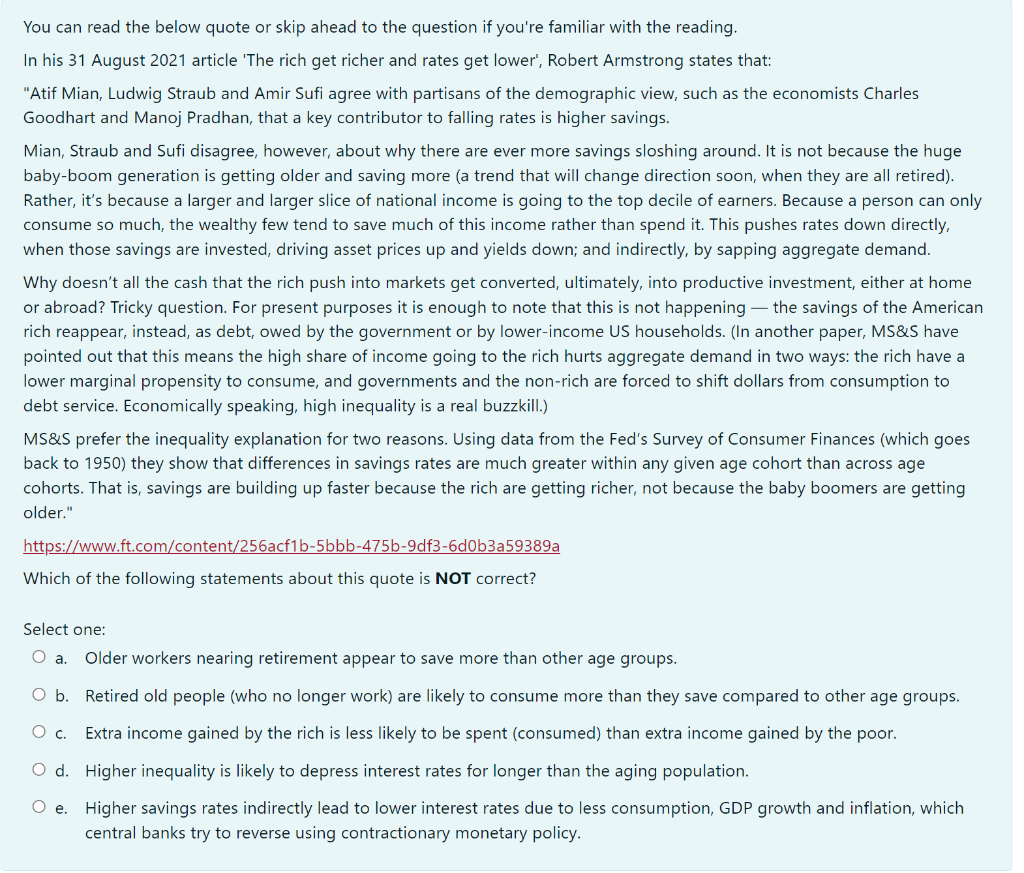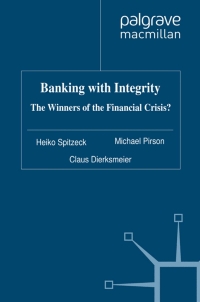
You can read the below quote or skip ahead to the question if you're familiar with the reading. In his 31 August 2021 article 'The rich get richer and rates get lower', Robert Armstrong states that: "Atif Mian, Ludwig Straub and Amir Sufi agree with partisans of the demographic view, such as the economists Charles Goodhart and Manoj Pradhan, that a key contributor to falling rates is higher savings. Mian, Straub and Sufi disagree, however, about why there are ever more savings sloshing around. It is not because the huge baby-boom generation is getting older and saving more (a trend that will change direction soon, when they are all retired). Rather, it's because a larger and larger slice of national income is going to the top decile of earners. Because a person can only consume so much, the wealthy few tend to save much of this income rather than spend it. This pushes rates down directly, when those savings are invested, driving asset prices up and yields down; and indirectly, by sapping aggregate demand. Why doesn't all the cash that the rich push into markets get converted, ultimately, into productive investment, either at home or abroad? Tricky question. For present purposes it is enough to note that this is not happening the savings of the American rich reappear, instead, as debt, owed by the government or by lower-income US households. (In another paper, MS&S have pointed out that this means the high share of income going to the rich hurts aggregate demand in two ways: the rich have a lower marginal propensity to consume, and governments and the non-rich are forced to shift dollars from consumption to debt service. Economically speaking, high inequality is a real buzzkill.) MS&S prefer the inequality explanation for two reasons. Using data from the Fed's Survey of Consumer Finances (which goes back to 1950) they show that differences in savings rates are much greater within any given age than across age cohorts. That is, savings are building up faster because the rich are getting richer, not because the baby boomers are getting older." https://www.ft.com/content/256acf1b-5bbb-475b-9df3-6d0b3a59389a Which of the following statements about this quote is NOT correct? Select one: O a. Older workers nearing retirement appear to save more than other age groups. O b. Retired old people (who no longer work) are likely to consume more than they save compared to other age groups. O c. Extra income gained by the rich is less likely to be spent (consumed) than extra income gained by the poor. O d. Higher inequality is likely to depress interest rates for longer than the aging population. Oe. Higher savings rates indirectly lead to lower interest rates due to less consumption, GDP growth and inflation, which central banks try to reverse using contractionary monetary policy







